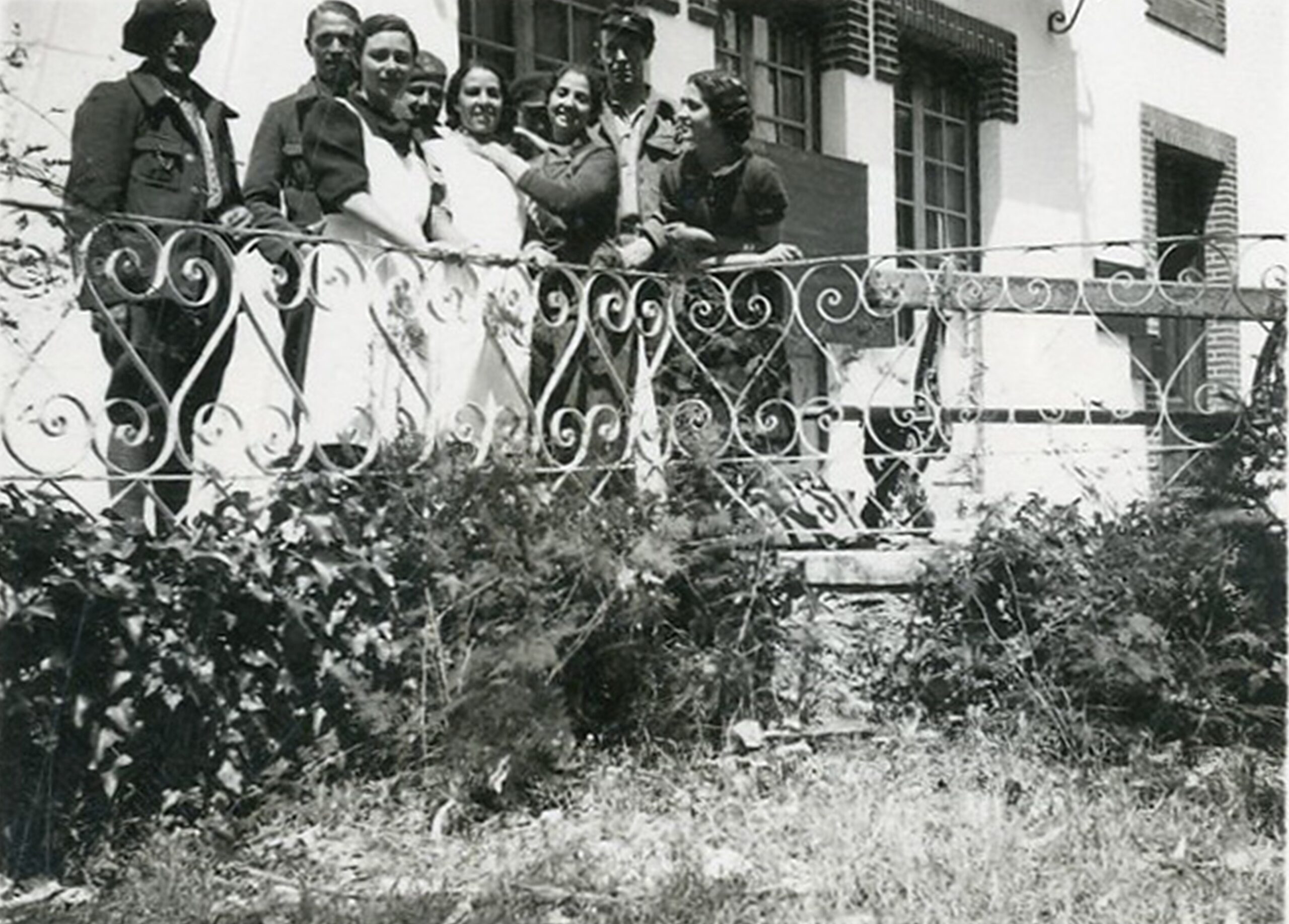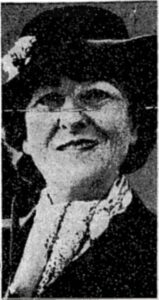Teresita, la cubana: An Intersex Volunteer in the International Brigades
Nine years ago, Robert Llopis accidentally came across a Cuban volunteer who went by Teresa but whose gender identity was unclear in the archives. A report on his research so far.
(Para el original en castellano con notas a pie, véase aquí.)
In 2013, while doing research on the International Brigade’s medical services in Benissa en Dènia (Valencia), I interviewed Joseph Almudéver Mateu, the French International Brigade volunteer of Spanish descent who died in May 2021. Almudéver told me an interesting anecdote about a Cuban lieutenant named Teresa, whom he had met in January 1939 on the deck of a ship that was evacuating international soldiers from Valencia to Barcelona. (
“When I came up to the deck, I saw a woman standing there. I walked up to her and introduced myself. After a while, she said: ‘I’m lieutenant Teresa, cubano.’ It turned out he was a Cuban dressed in [civilian] women’s clothes. We then switched to speaking in Spanish.”
The story immediately made me wonder about the gender identity of this Cuban volunteer. Who were they? What was their story? In the years since, I’ve combed the archives in search of clues.
Not long after speaking to Almudéver, I found a crucial lead in the 1943 book War Is People by the American journalist Lorna Lindsley. Published at the height of World War II, the book narrates the author’s personal experiences in civil-war Spain, British Palestine, and France. In the thirteenth chapter, titled “Teresita,” Lindsley tells us about the time in Denia when she met a Cuban volunteer of the International Brigades who presented herself as Teresa and dressed in women’s clothes. My research so far seems to confirm that this is the same person Almudéver met on the ship.
Lindsley does not specify on what date she met Teresa, but I have been able to track down the authorization she received from the Valencia Propaganda Office to visit the IB Hospital in Denia, which is dated October 7, 1938. At that point in time, the Republican zone was split into two separate zones, as the Francoist army had occupied the area north of Castellón since April of the same year. Since May 1938, Denia had housed the only IB Hospital outside of Catalonia.
“I first met Teresita in Denia,” Lindsley writes:
I was walking down to the port with some convalescent IB’s and a nurse from New York called Rose. Rose cried: “Look, there’s Teresita! Now you’ll have some fun, she’s a scream. Oiga Teresita!” Coming towards us was a strange figure. She was a tall, thin, light-skinned Negress. On her head was an officer’s cap; her sleezy silk dress looked strangely out of place on her long muscular arms and above her thin legs and feet, which were shod in discolored mules, feminine slippers, with a wisp of wilted ostrich feather still on them. On her left breast were sewed officer’s stripes and she wore two military decorations. She carried a home-made fishing pole in one hand and a tin pail in the other; the pail was half-filled with water and a tiny fish flopped listlessly in it. […] Her name was Teresita Lamoneda, but her accent was best Pullman-car American. She breathed heavily when she stopped walking, and the beads of perspiration on her forehead were a sign of her weakness […] She was born in Cuba of Afro-Cuban parents. She was a dancer by profession […] She has worked in small vaudeville acts from Florida to Texas and had once even got as far as Fresno on a tour. She told me she loved Texas and that she was an American citizen.
Teresa told Lindsley she’d been born in La Habana and had come to Spain to work as a dancer in Madrid. The 1936 military coup surprised her in Toledo, where she was staying with her partner, a young man from Galicia. Her partner was captured by the rebels but managed to escape in a rescue operation that involved Teresa, who got in the process got shot in the groin by a fascist guard. After her recovery in a hospital in Republican Madrid, she joined the militias as a volunteer and was sent to the front at Talavera de la Reina (Toledo), along with her partner. Teresa told Lindsley she’d received two medals, one for being wounded and another after she’d been declared unfit for military service. She had also been promoted to lieutenant, which explained the stripes on her cap and dress.
The lists of international combatants hospitalized in Denia between April 1938 and January 1939 do not include anyone named Teresa Lamoneda. Still, there are other oral testimonies of her presence in Denia during the Civil War. As Lindsley explains, Teresa was quite popular and beloved by the people of Denia. An oral history published in 2019, for example, includes the testimony of a local man, Juan Pérez Tamarit, aka Carrasca, who recalled that “among the Internationals was a black woman, or a man who was a woman… It was a mystery that had people excited” (“junto a los Internacionales, había una negra o un negro que era negra… era un misterio y hacía expectación”).
Although Teresa Lamoneda’s name does not appear among the combatants who were convalescing in Denia, that does not mean she wasn’t there. In fact, I am certain she was listed under a different name. The military documents from the period between July 1938 and January 1939 list, in different variations, a Juana Tomás Llamacero, who is alternately named Juana Llamacero Tomás, Tomás Llamacero Juana, or Tomás Juan Llamacero. The archive is also ambiguous about this person’s nationality, which alternates between Cuban and American, while one document lists her as Spanish. All the documents list her rank as soldier, except for the declaration of unfitness for service, from the Permanent Military Medical Tribunal in Alicante, dated May 27, 1938, which identifies her as lieutenant.
The diagnosis that was adduced to justify the verdict of unfitness for military service was double: “hermaphroditism and pulmonary tuberculosis.” In her book, Lindsley writes that Teresa presented as a “genuine lady hermaphrodite” and suffered from lung disease. She also describes how Teresa’s fellow IBers saw her: “They all agreed with me that Teresita was an enchanting person, but they couldn’t vouch for any of her story save the fact that she had fought, and fought bravely. She had been wounded twice, and decorated, but they did not think she was a lieutenant […] Her heroism was incontrovertible, but her sex was still a matter of controversy.”
What we know is that Teresa, or Juana, was 33 years old in 1938, that she was 5’7” tall and wore a shoe size 7.5. According to Lindsley, she was a “light-skinned” black woman, while Almudéver called her “neither black nor white: a mulatto.” In all the documentation, she’s listed as a member of the XV International Brigade.
The last time Lindsley saw Teresa, sometime in October or November 1938, the journalist passed on her address in Paris. Teresa told her that, after the war, she planned to go to Russia, as long as her doctor thought her lungs could stand the climate. Lindsley also tried to help her by contacting the US Consulate General in Valencia, but they were unable to confirm Teresa’s US citizenship. The Consulate appears to have found records of a Cuban passport under the name of Manuel Lamoneda, but Teresa denied she was Manuel and insisted that she was a hermaphrodite woman. (To confuse matters further, there is a Manuel Lamoneda in the archives; he was an officer in the Republican army who, after the war, spent six years in a Francoist prison.)
Several people spoke with the Consulate to confirm Teresa’s identity as a woman, but the Consul, who was ready to help, could find no legal basis to do so. Finally, he decided to submit Teresa to a private medical exam to establish her biological sex. The exam concludes she was a man, contrary to the Republican military health authorities, which, as we saw earlier, had identified her as a hermaphrodite. In March 1939, the Consul wrote to Lindsley to report what had happened. He was sorry, he said, to see Teresa leave so “desperately ill.”
What came of Teresa? We know that she spent an uninterrupted fourth months at the Denia military hospital, from at least July 6 to November 15, 1938, when she was released. On December 20, the documentation somewhat enigmatically registers her return to Denia from the “war industry.” Given her health, it is very unlikely she worked in a factory. Possibly, the phrase served to cover up the time she spent in Valencia working with the Consulate. In any case, she then stayed in Denia until her evacuation on the ship where she met Almudéver, entering the Barcelona harbor on January 18, 1939. It is possible that, from there, she was able to cross the French border, but I have found no records to confirm that. Lindsley writes in her book that she heard Teresa died in the concentration camp at Gurs, in southern France, but the archive only mentions one deceased Cuban there by the name of Florencio Villaray-Suárez, who was 54 when he died. Nor does Teresa appear among the five Cubans who were deported from Gurs to Nazi extermination camps during the Second World War. Her trail disappears in 1939, in the chaotic refugee exodus to France.
Teresa’s story recalls those of other Republican combatants, such as Florencio (Teresa) Pla Messeguer, aka La Pastora, the anti-Francoist guerrilla fighter who was raised as a girl but identified as a man, and Rosits, a transsexual Spanish soldier in the Ortiz Column identified as such by the researcher Gonzalo Berger. Although the archive has so far only yielded fragments of Teresa’s case, the story of this intersex combatant in the International Brigades certainly deserves further research.
Robert Llopis Sendra is a social worker in Altea (Valencia) and a researcher on the Spanish Civil War and the International Brigades in the Valencia region, topics about which he has published several books. He can be reached at tombaturons@gmail.com. For a Spanish, footnote version of this article, see our online edition at albavolunteer.org. Translation by Sebastiaan Faber.

















